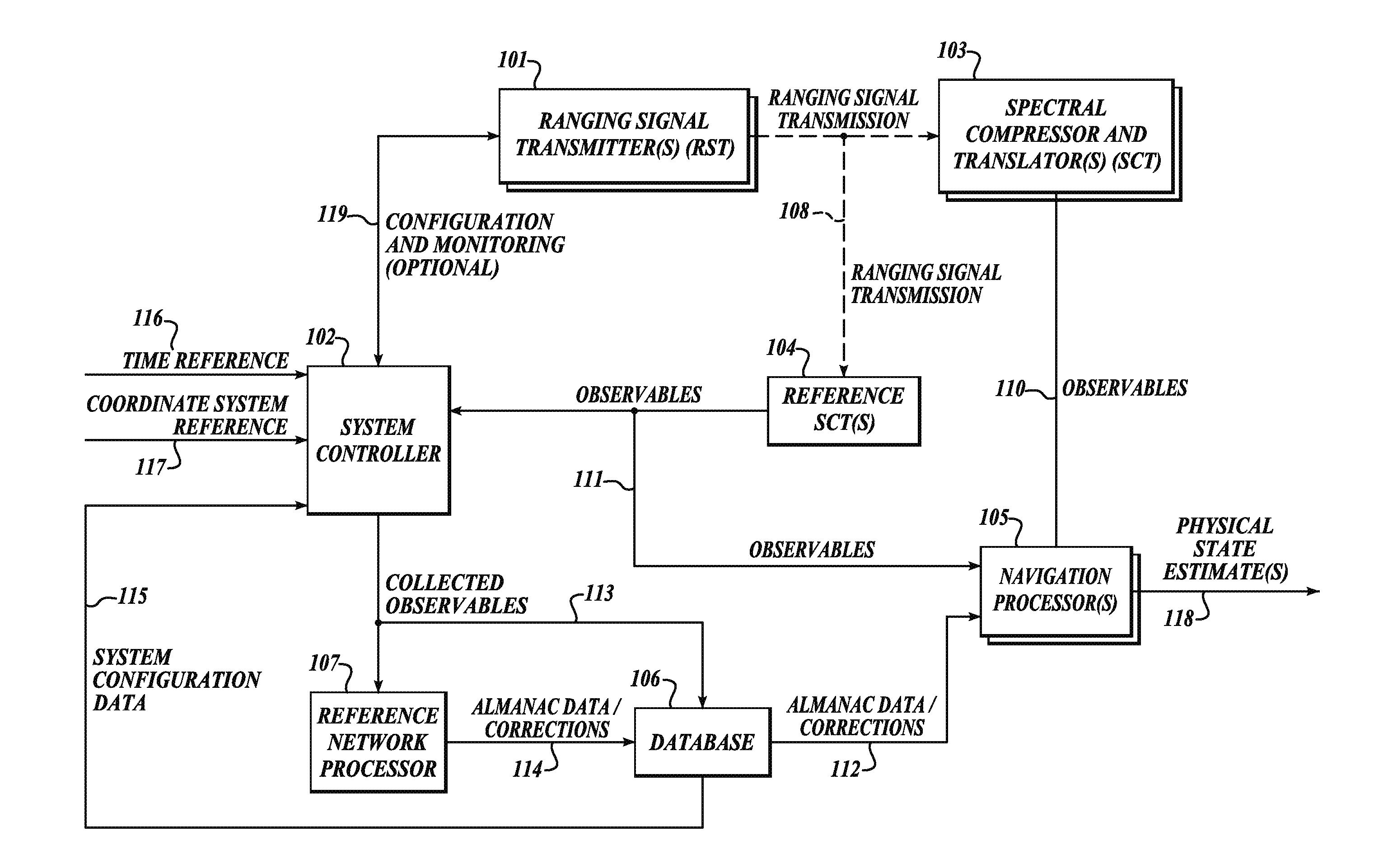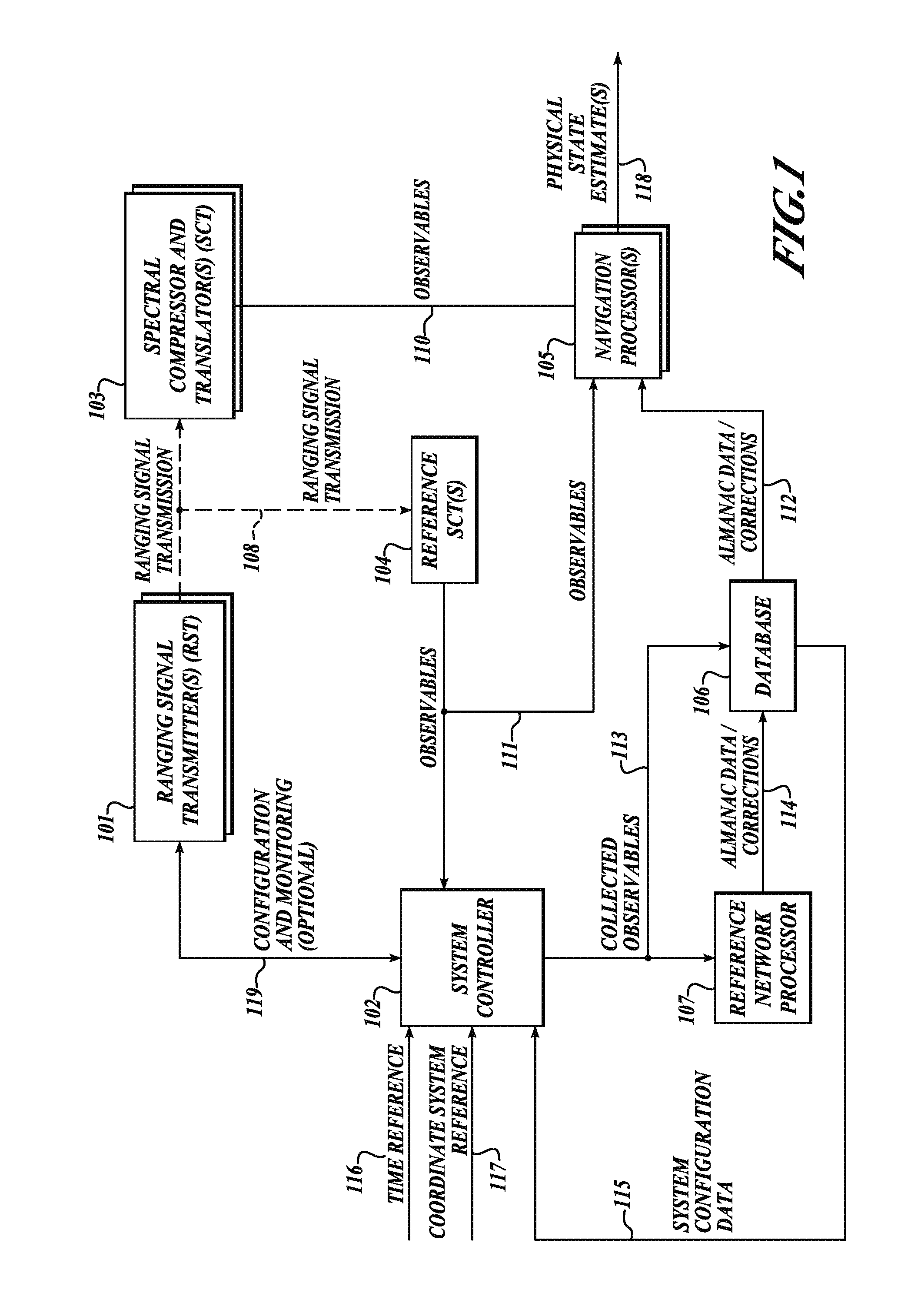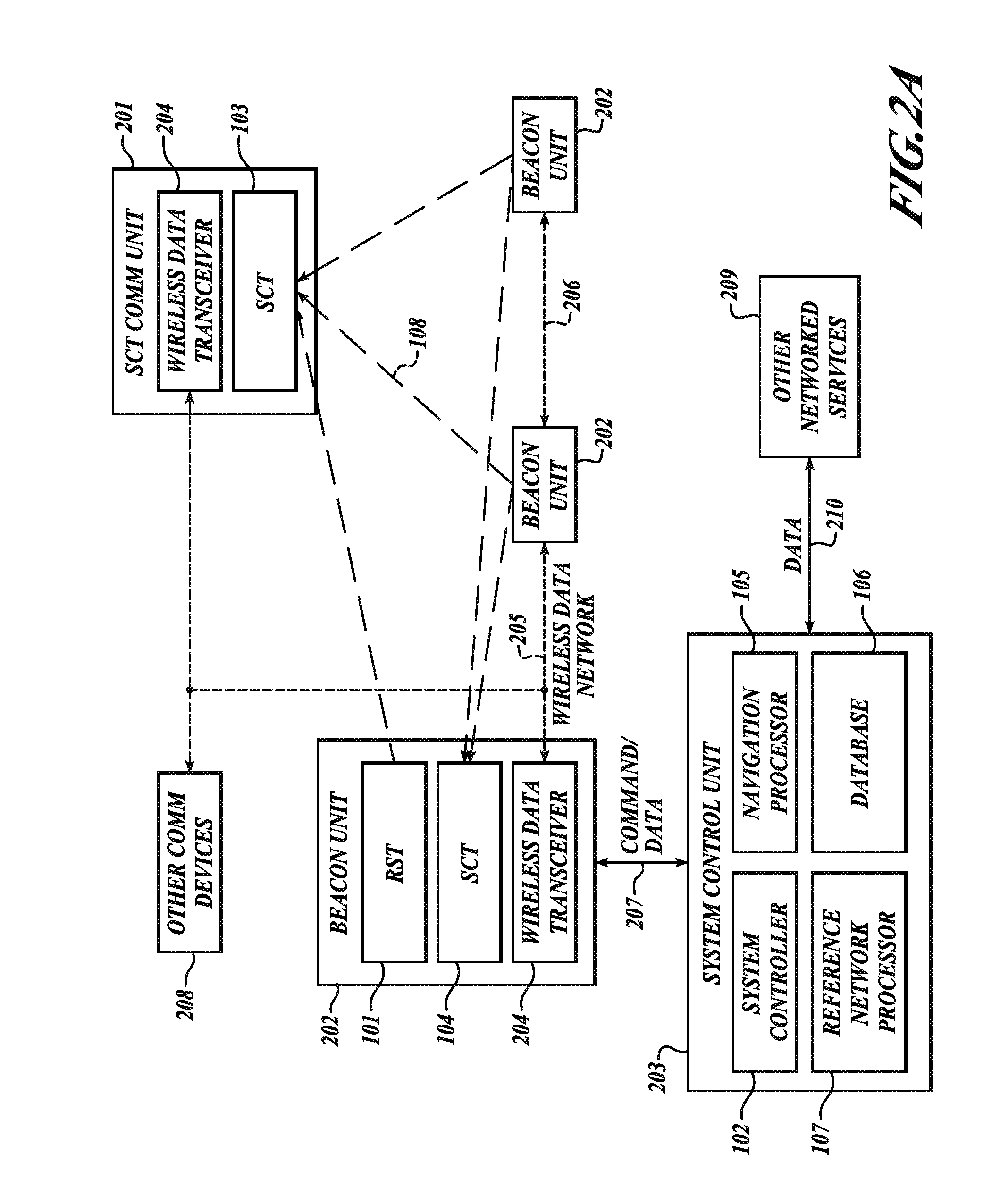[0106]The preferred embodiment of the present invention facilitates a reduction in manufacturing cost and complexity of units implementing the SCT function while maximizing flexibility and performance. A further
advantage of the present invention is achieved through integration of system functionality with
wireless data communication functions, which allows sharing of
digital signal processing and RF front-end circuits. As described in greater detail below, the SCT function of the present invention significantly reduces complexity and thus cost as compared to most
wireless data communication receivers. By implementing SCT functions as an extension to the communications functions, physical state determination capabilities are added with little additional cost. Further, the integration with
wireless data communications occurs naturally by combining sending / receiving data functions into the
system controller.
[0107]FIG. 2A shows the integration of the present invention with a meshed
wireless data communications network such as Zigbee (802.15.4). An SCT 103 and
wireless data transceiver 204 are combined to form an SCT communications unit 201. In its simplest form, the unit 201 represents a tag capable of RFID and physical state sensing. A
beacon unit 202 is preferably comprised of an RST 101, SCT 104, and a
wireless data transceiver 204. A plurality of
beacon units is deployed over a physical area to provide both positioning
ranging signals 108 and communications network infrastructure 205 and 206. The integration of an SCT 104 with the
beacon unit enables each beacon unit to act as a reference SCT collecting observables from other beacon units deployed within range. Through this combined
ranging transmission and collection of observables the system facilitates collection of the information necessary to determine its own configuration using the reference
network processor 107. In one embodiment, the
system controller 102, navigation processor 105, reference
network processor 107 and
database 106 are combined to form a system
control unit 203 that centralizes the complex
data processing and
management functions. The system
control unit 203 is preferably connected to the wireless data network 205 via one or more beacon units through a communication signal 207. For wireless data networks supporting meshed networking, beacon units 202 become nodes in wireless data networks 205 and 206. Meshed
network deployment effectively simplifies installation of the location system enabling each beacon unit 202 to coordinate with the system
control unit 203 via other beacons units without requiring installation of other communication mediums (e.g.
Ethernet). In the preferred embodiment of the present invention, the system control unit is physically connected to one or more beacon units via an
Ethernet connection, which provides advantages of robustness and reduced cost. For greater portability and flexibility, the communication signal 207 may be accomplished by connecting a wireless data
transceiver 204 directly to the system control unit 203.
[0108]Once deployed, as integrated with a wireless data communications network (shown in FIG. 2A), the present invention can also be used for a variety of data networking applications between communication devices 208 and networked services 209 external to the system. As discussed in further detail below, the communication requirements for the present invention minimize the need for communications resources, leaving the bulk of the bandwidth available for other activities. In the preferred embodiment, the system control unit 203 is a gateway for networked services to access devices on the wireless data networks 205 and 206. The wireless data networks 205 and 206 may be secured by data
encryption and other security means such that only authorized user is able to access and use the beacon unit 202 and system control unit 203 gateway infrastructure for relaying information between devices and services.
[0109]FIG. 2B shows an alternate embodiment of the SCT communications unit 201 where the navigation processor 105 is integrated directly with the SCT 103 and wireless data transceiver 204 functions. This configuration enables calculation of SCT
state vector 118 at the unit in situations where almanac and data corrections 112 are available from the system. The almanac and data corrections 112 are delivered to the SCT communications unit 201 a priori or
on demand as requested by the unit 201. In an alternative embodiment, the unit 201 may request observables from one or more reference SCTs to determine a full differential solution. Similar to the configuration of FIG. 2A, the semi-autonomous configuration described in FIG. 2B may utilize system control unit determined physical state estimates as needed. For example, this capability may be useful in situations where the navigation processor 105 is unavailable due to limited power resources.
[0110]FIG. 2C shows an alternate embodiment of the SCT communications unit 201 in which a
machine to
machine interface (MMI) 235 is integrated with core SCT functions 103 and wireless data transceiver functions 204 to provide SCT physical state estimate (PSE) 118 and data communications 233 for external devices 234. This configuration is typical of a location-enabled communications
peripheral, where the external device 234 includes custom driver
software enabling it to access physical state determination and communications functions of the SCT communications unit 201. This configuration represents a low-cost implementation with respect to SCT communications unit complexity. In this embodiment, the observables 111 are processed by the system control unit 203, which returns the
resultant physical state estimate 118. This information is relayed by the SCT communications unit 201 to the external device 234 via the MMI 235.
[0111]FIG. 2D shows an alternative embodiment of the SCT communications unit 201 where both a navigation processor 105 and an MMI 235 are integrated with the core SCT functions 103 and wireless data transceiver functions 204 to provide a semi-autonomous positioning capability. Similar to the embodiment shown in FIG. 2B, this embodiment is capable of determining the SCT physical state estimate (PSE) 118 in situations where the systems control unit 203 delivers appropriate almanac data and corrections 112. As with FIG. 2C, the SCT communications unit 201 provides PSE 118 and data communications 233 to an external device 234.
 Login to View More
Login to View More  Login to View More
Login to View More 


